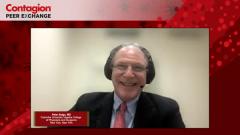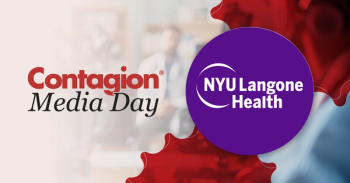
COVID-19 Booster Shot Roadblocks
Drs Angela Rasmussen and Donald Alcendor detail the roadblocks facing COVID-19 booster shots.
Episodes in this series

Peter Salgo, MD: What are the roadblocks with the COVID-19 booster recommendations? What do we do about them? How do we address them? Donald, do you have any suggestions?
Donald Alcendor, PhD: Yes. One roadblock is the messaging around boosters. There’s always late-breaking news on boosters and how the eligibility criteria change over time. The public has yet to be able to keep up with those changes. Vaccinators are also finding it difficult to keep up with these changes. When people come to our vaccine events, they’re confused about whether they’re eligible. They show up, but some of them don’t understand that they have to get this booster 6 months after their complete vaccination with the 2-dose regimen. Being able to find [availability for] these boosters is difficult for some underserved populations as well. We see a lot of things happening with the boosters, but boosters are out there for people who want them. One problem is that so many people don’t want them or the first or second dose as well.
Peter Salgo, MD: Of these 2, I get the sense that the priority is to get people their first and second doses.
Donald Alcendor, PhD: Yes.
Peter Salgo, MD: Are there enough boosters out there that everybody who wants a booster can get a booster? Jason?
Jason Gallagher, PharmD, FCCP, FIDP, FIDSA, BCPS: In the United States, there’s absolutely no shortage of supply. If anything, it’s the opposite. We have a relative oversupply. To give a little perspective: I live in New Jersey, which despite popular opinion is a wonderful state, and 1 major way of getting vaccines in the first and second dose into people was through these megasites, old department stores and so forth. Those have closed down. The boosters have been shunted largely to smaller clinics, pharmacy chains, and so forth. So the logistics have changed as well. I wonder what that’s like in more vaccine-hesitant communities. Have similar problems have occurred?
Peter Salgo, MD: What about employees and employers? There’s a lot of controversy over requiring employers to vaccinate, much less boost, their employees. There’s a lot of pushback. I saw an article in the newspaper the other day that many large retailers are reluctant to implement mandatory vaccination, even large retailers with huge employee populations. They need the employees without regard that unvaccinated employees may turn these large stores into superspreaders. Is that a fair criticism, Jason? What do you think?
Jason Gallagher, PharmD, FCCP, FIDP, FIDSA, BCPS: I’ll throw this out there: I strongly support vaccine mandates. The only way forward is through vaccinating our public. Booster mandates aren’t something I’m willing to go down. I don’t think it’s the same degree of importance. Truthfully, I haven’t thought about it, and don’t want to think about it yet. I don’t think that’s the major goal. It’s trying to get those first and second doses into more people to protect one another: the customers and especially the patients they serve.
Peter Salgo, MD: All right, let’s look at the future. Nobody is being asked to do anything but prognosticate, which means it’s uncertain and we’re not going to hold you to it, although we’re being recorded. People are going to be boosted. A year from now, will this influence hospitalization rates? Will the boosting influence severe disease rates? Angie, what do you think?
Angela Rasmussen, PhD: In vaccinated populations, in immunized populations, we see hospitalization rates decrease. One way or another, people are going to be exposed to the spike antigen from SARS [severe acute respiratory syndrome] coronavirus 2. A year from now we’re probably going to have a lot of unvaccinated people who have at least some residual immunity through exposure and infection. I wish that weren’t the case, because anybody who dies in that situation is a preventable death, but that’s the reality. We’ll see increased immunity at the population level without vaccines.
Immunity from infection can be incredibly variable; it may not be that long lasting. But we also expect this virus to become endemic, which means we’re not going to be rid of it anytime soon. In the United States, we’ll eventually move from being in constant crisis mode to a more “normal.” I hate to use that term, but for a lot of people their lives will go back to being more like they were in 2019, before we had heard about SARS coronavirus 2. In other parts of the world, that process is going to take different periods of time, and that has to do with vaccination.
The real wild card is that this is a zoonotic virus. It’s also a very generalist virus; it can infect many species. We already know that other animal reservoirs have been established, including white-tailed deer, cats, and several small carnivores such as raccoons that are susceptible to this virus. There’s a lot of opportunity to establish an animal reservoir, and we’ve seen zooanthroponotic transmission or, as some people call it, reverse zoonosis, in which people are giving the virus to animals and then they’re giving it back to people. That’s exactly what happened after the mink farm outbreaks in Denmark.
I’m concerned, and several of my colleagues have observed that omicron is so evolutionarily different. One explanation for why it wasn’t detected before it emerged in the human population is that it’s the result of transmission through a different animal species. Given that, it’s going to be very hard to predict the new variants we might be dealing with and how they might impact a vaccinated population. But the good news, as Donald pointed out at the beginning, is that the vaccines have proven to be very cross-protective against severe disease, hospitalization, and death for all the variants of concern that we’ve looked at. That’s going to be the marker that we’re always going to have to look to. In a year’s time, in the United States, Canada, and countries that have adequate access to vaccination, we’ll stop living in acute pandemic times and move into the chronic phase of endemicity.
Peter Salgo, MD: Did I take from what you said that you’re expecting there to be some degree of herd immunity in a year or 2 in the United States?
Angela Rasmussen, PhD: I think so. I know we don’t have time to get into this, but this has been confusing for a lot of people who say, “I had COVID-19. Why do I have to get vaccinated?” I don’t think we’ve done a good job explaining to people that infection-acquired immunity exists, but it’s not as reliably robust and durable as vaccination-induced immunity. This has been a real problem, but it does confer some level of immunity. If unvaccinated people are exposed, especially if they’re reinfected and exposed multiple times to the virus, eventually they’ll develop memory immune responses. That may be somewhere on a protective spectrum.
Peter Salgo, MD: I want to thank you at home for watching this Peer Exchange discussion. If you enjoyed the content, subscribe to our e-newsletters to receive upcoming Peer Exchanges and other great content right in your in-box.
Transcript edited for clarity.
Newsletter
Stay ahead of emerging infectious disease threats with expert insights and breaking research. Subscribe now to get updates delivered straight to your inbox.
























































































































































































































































































